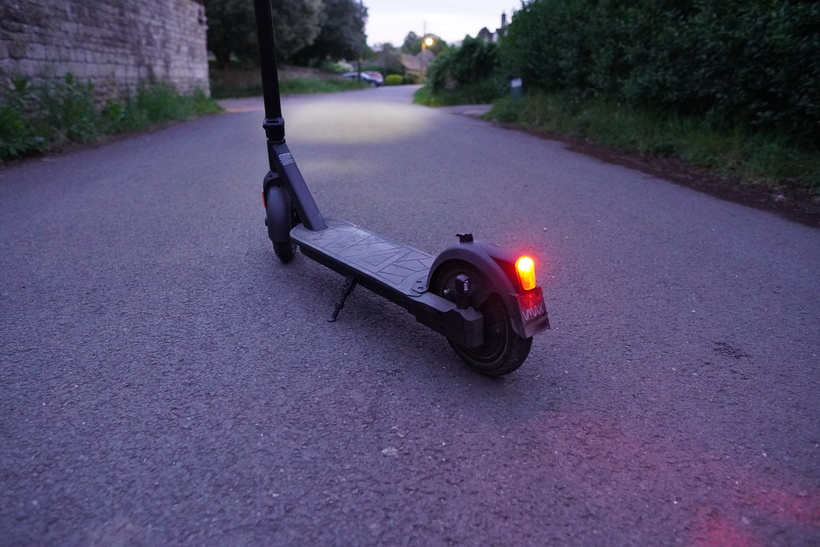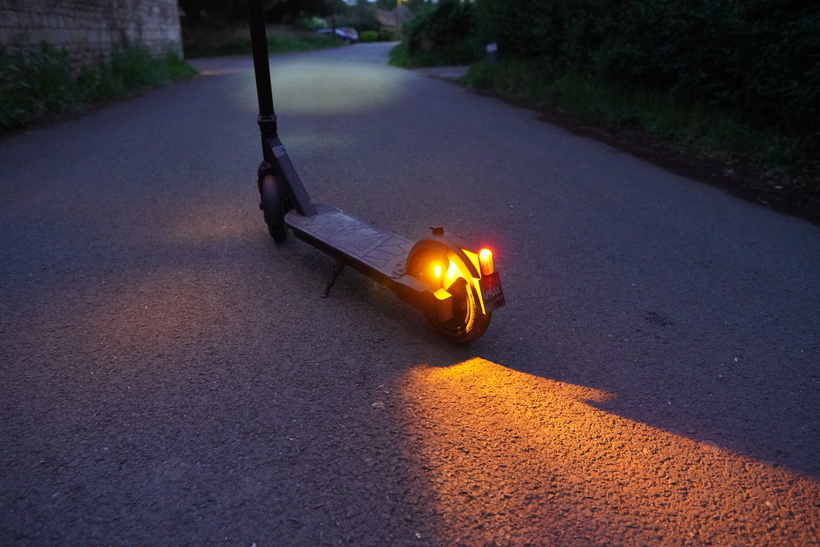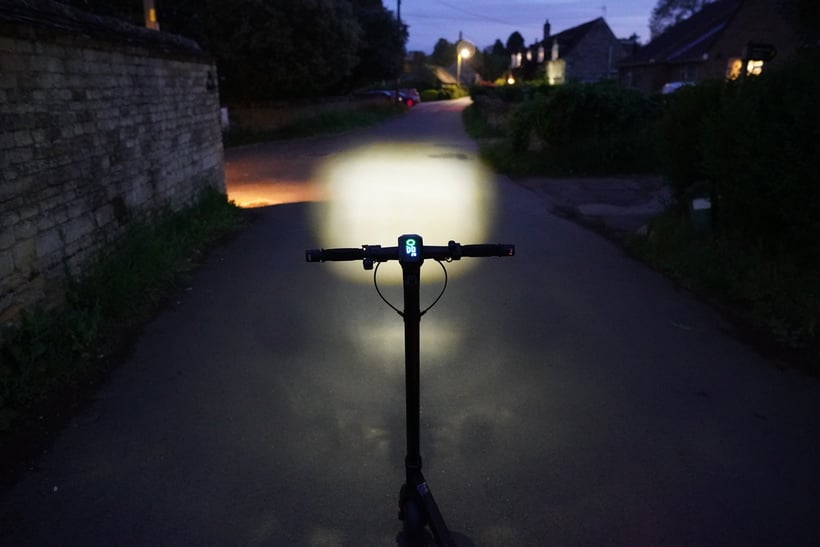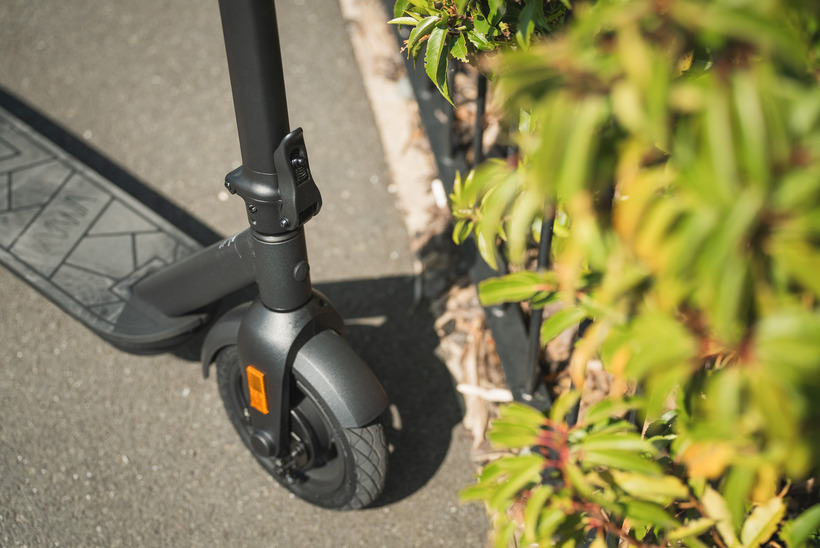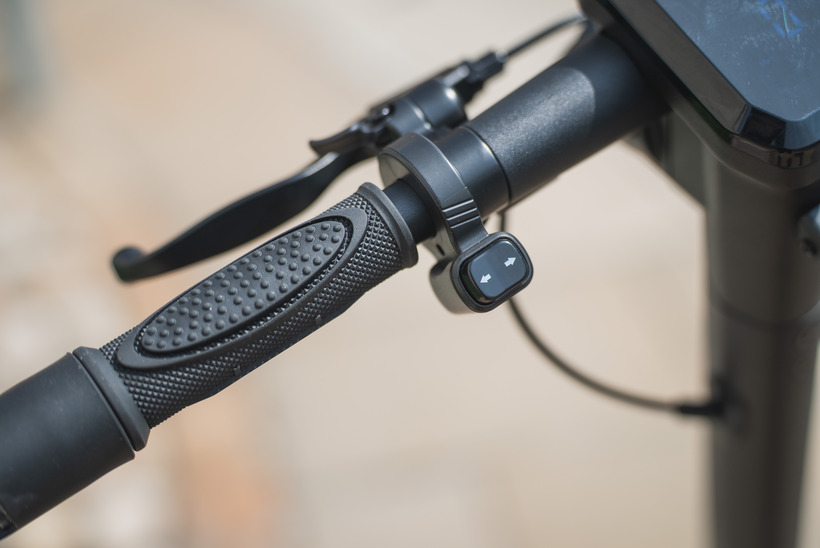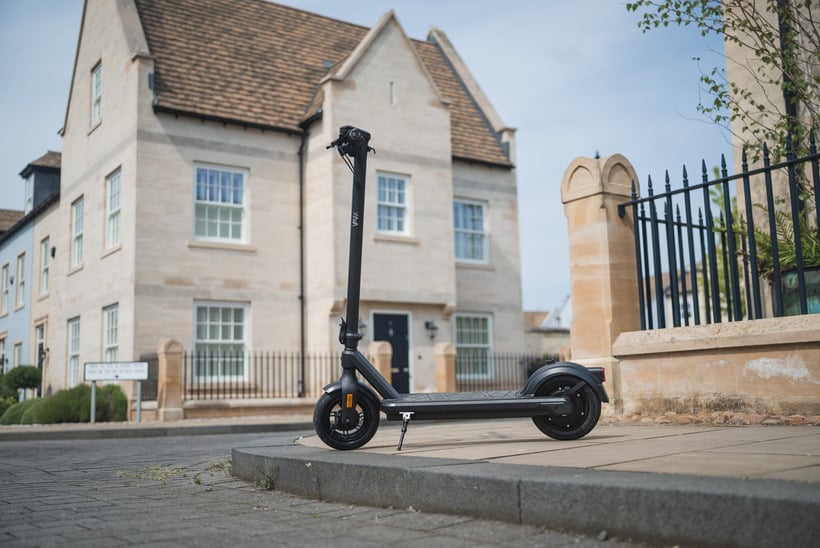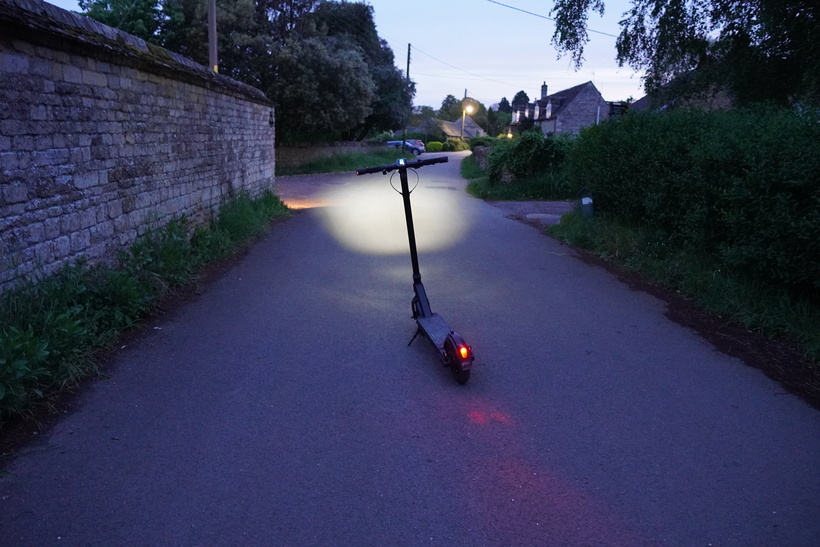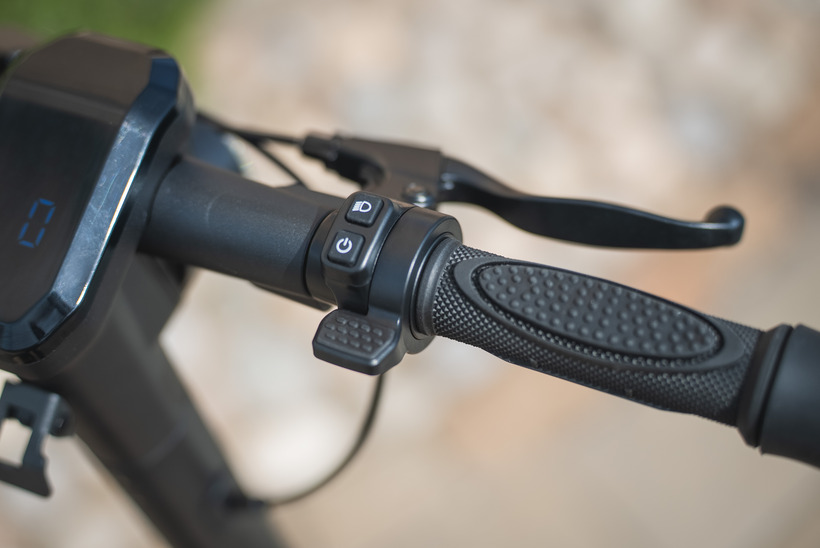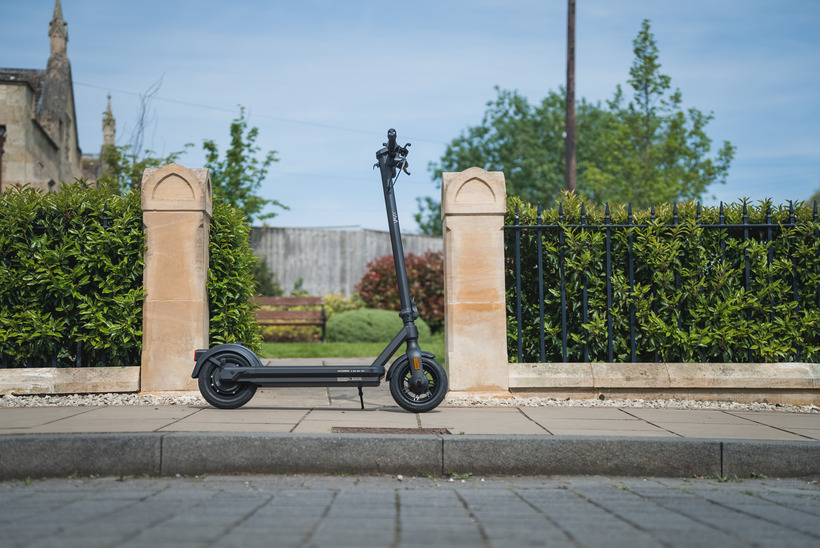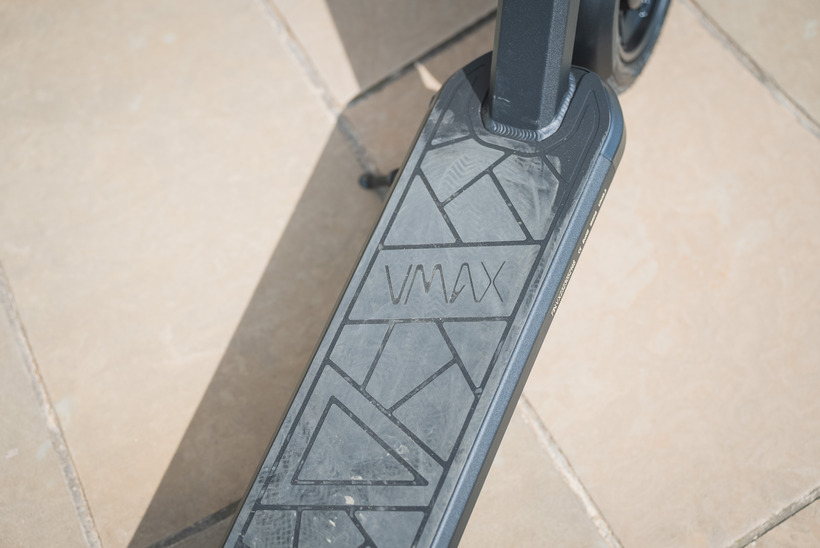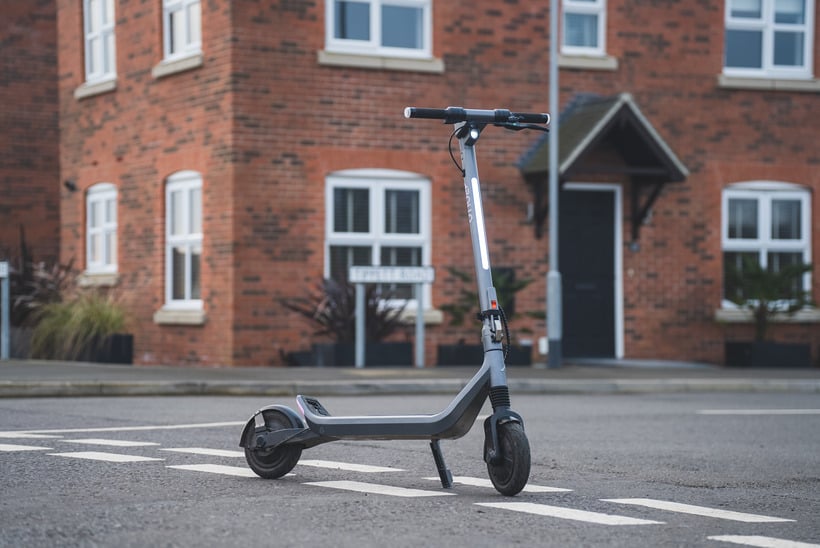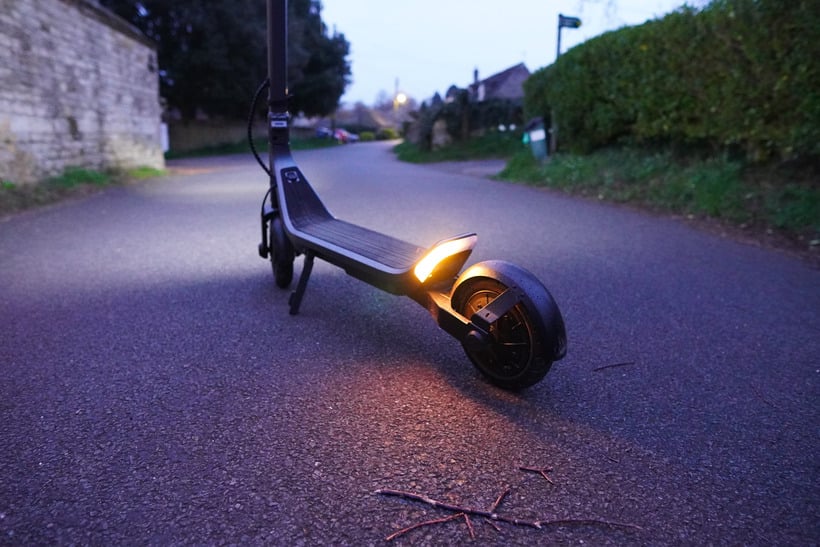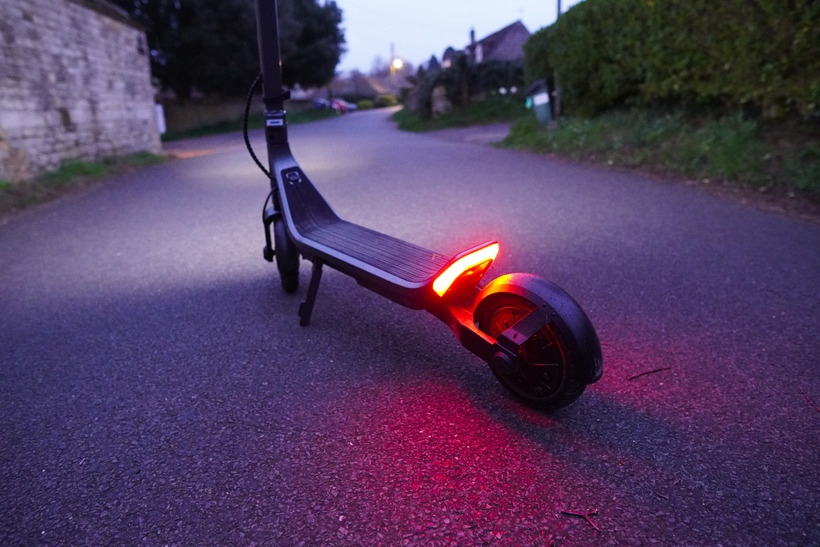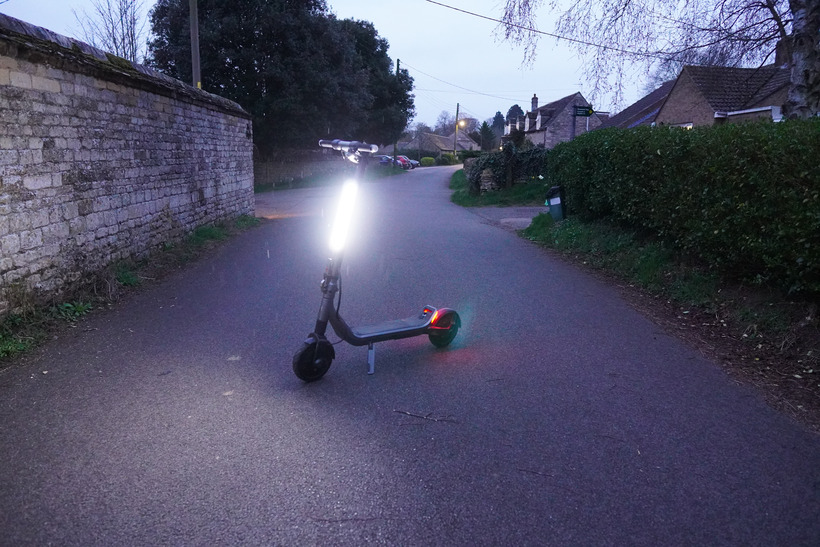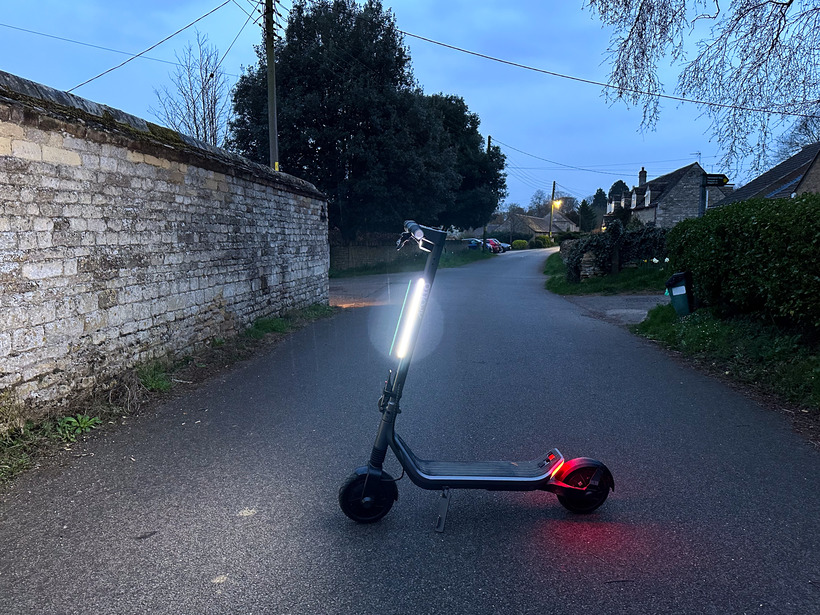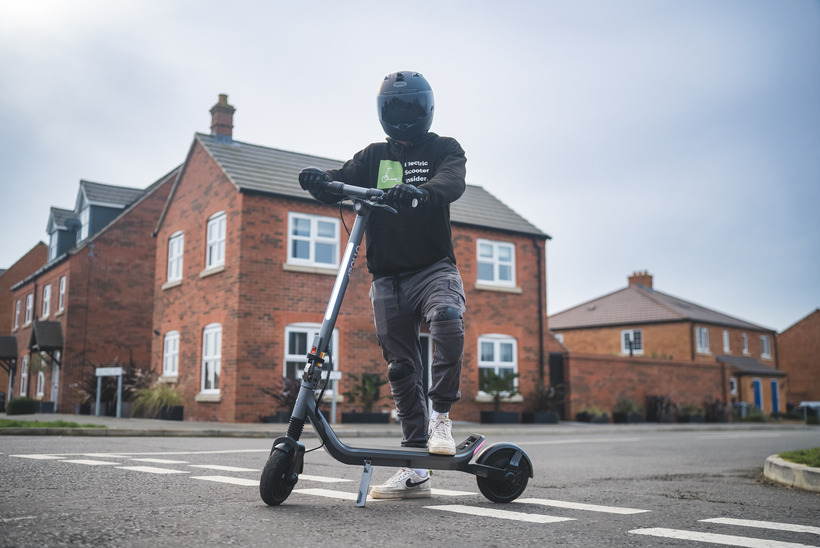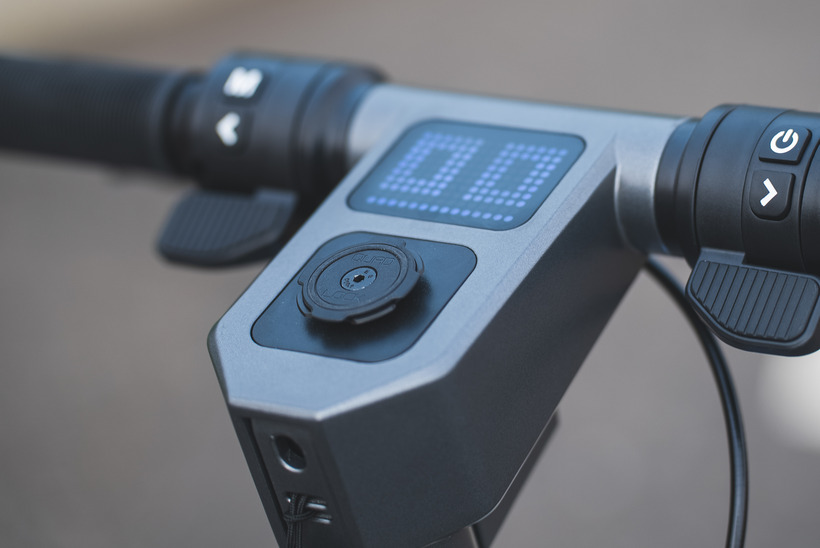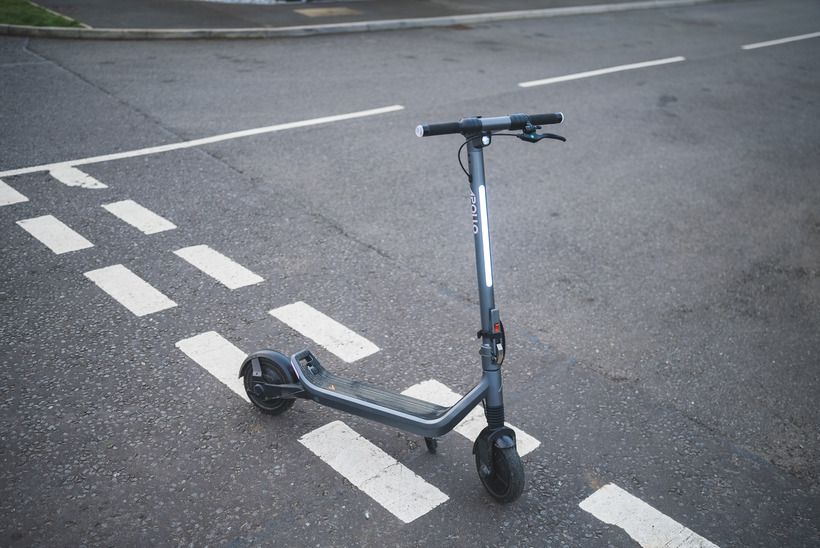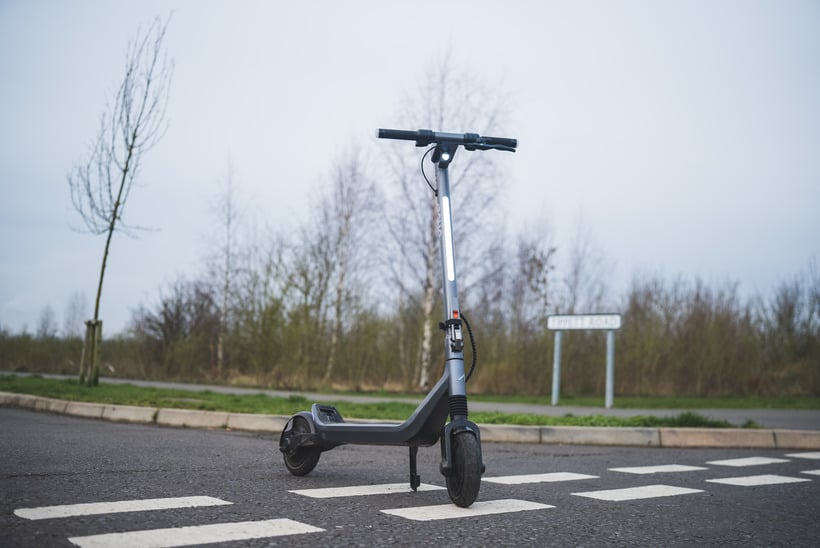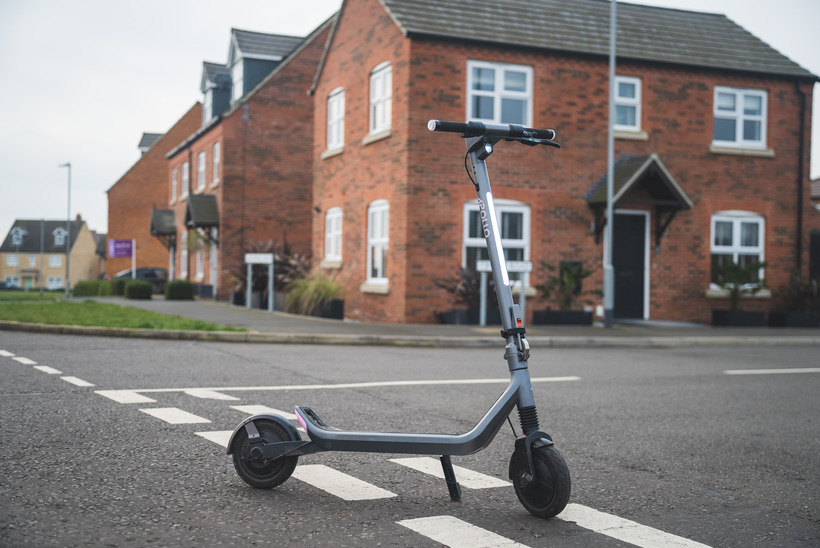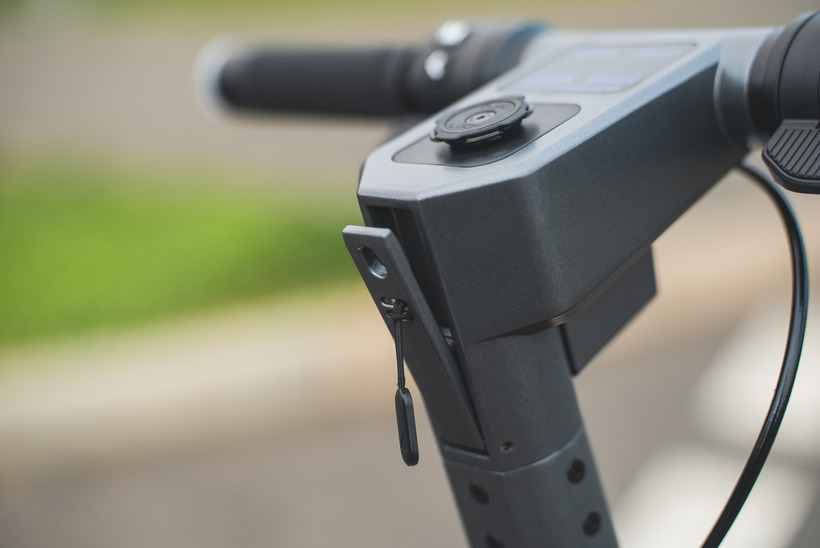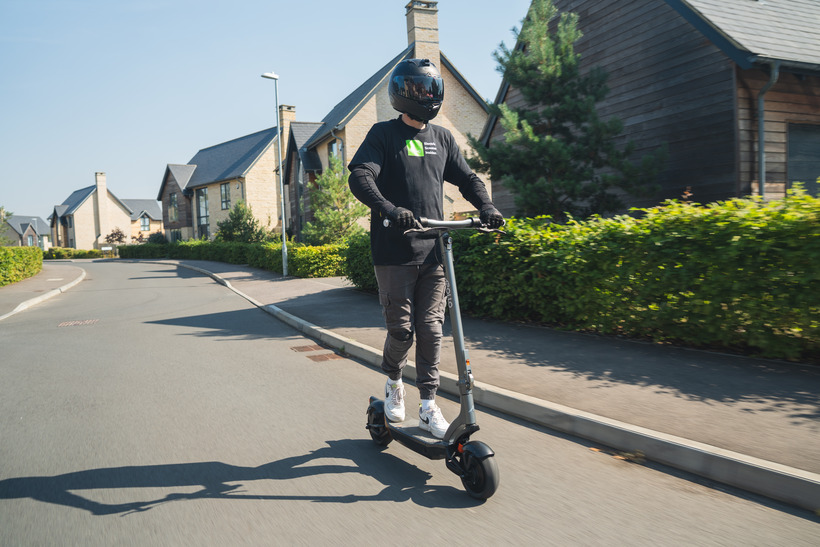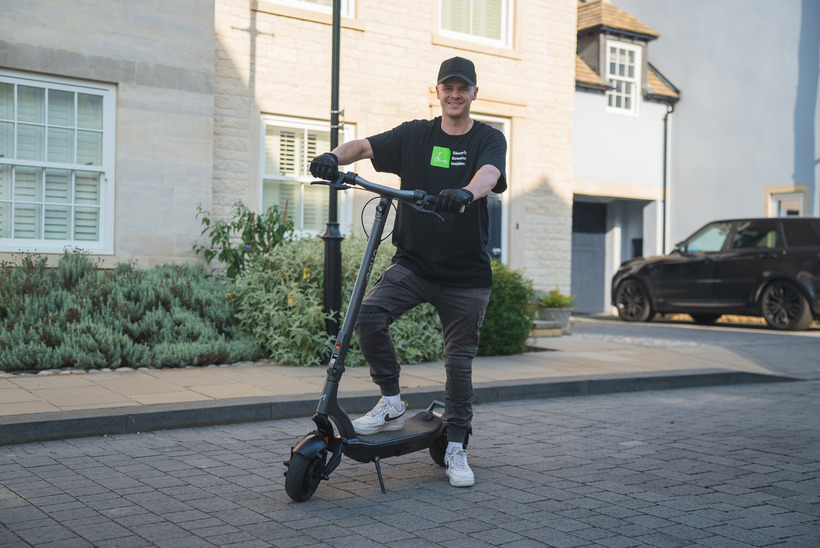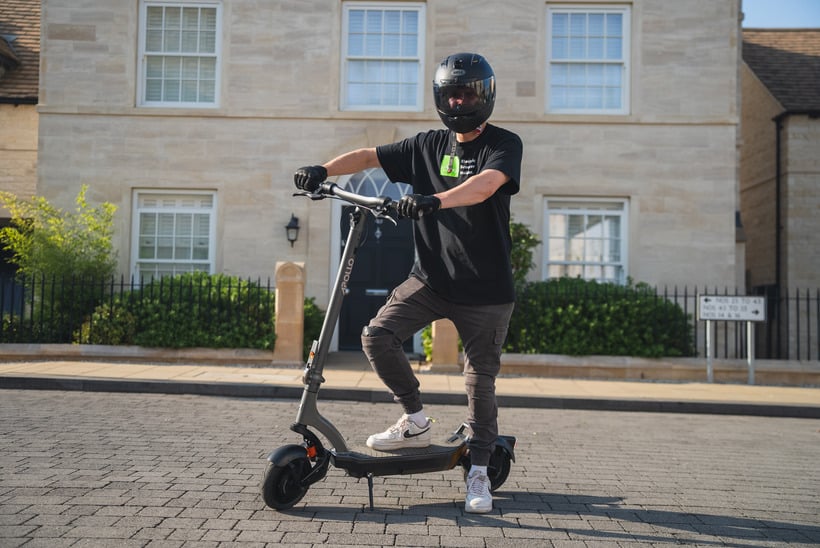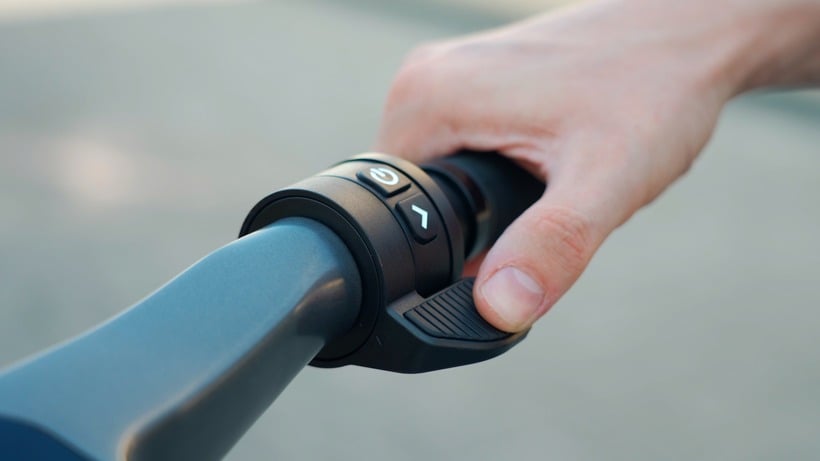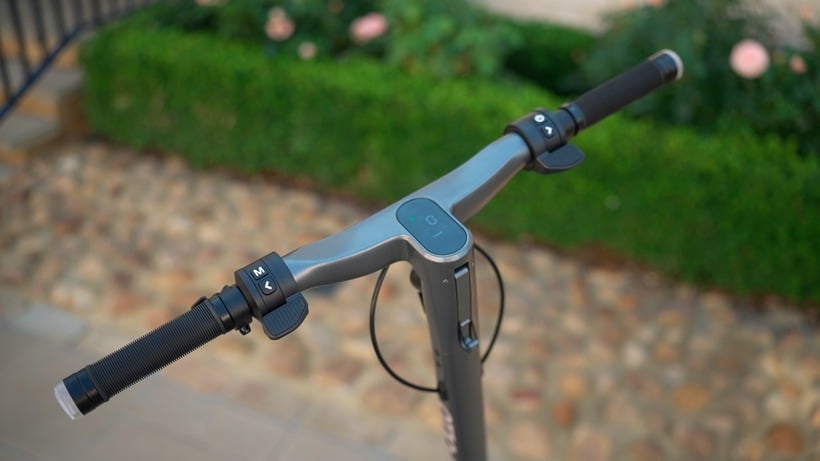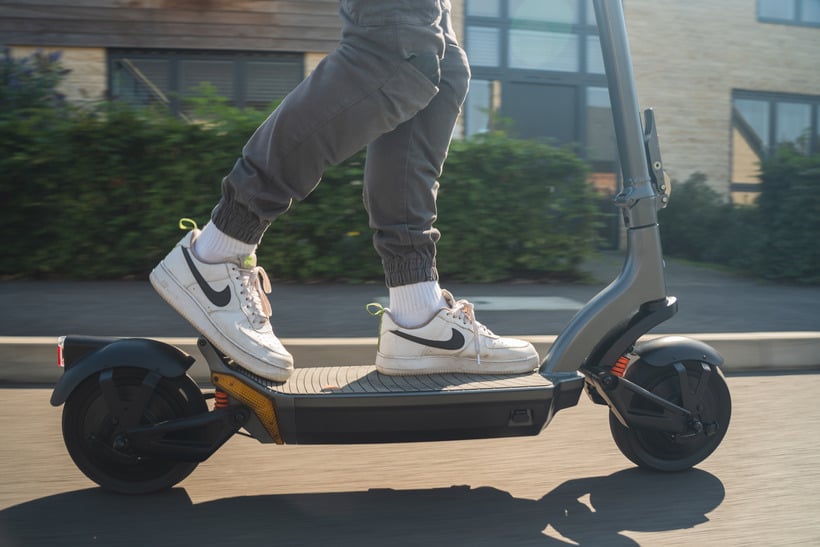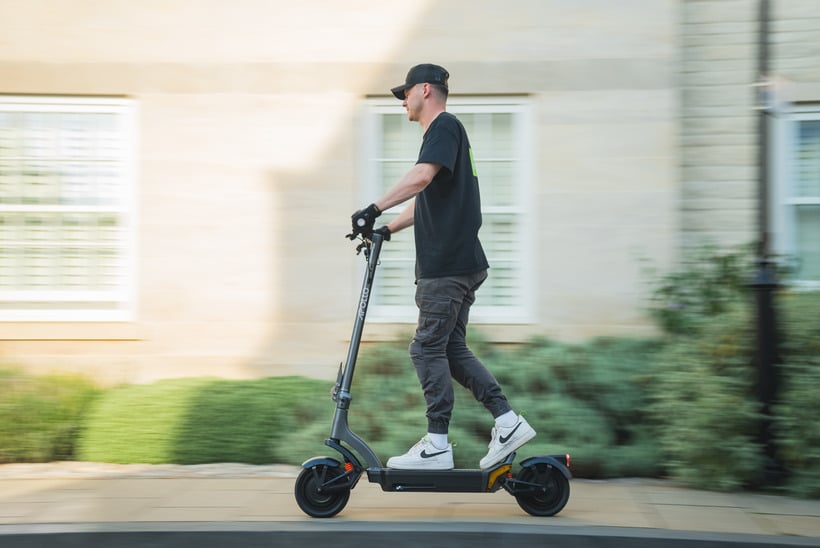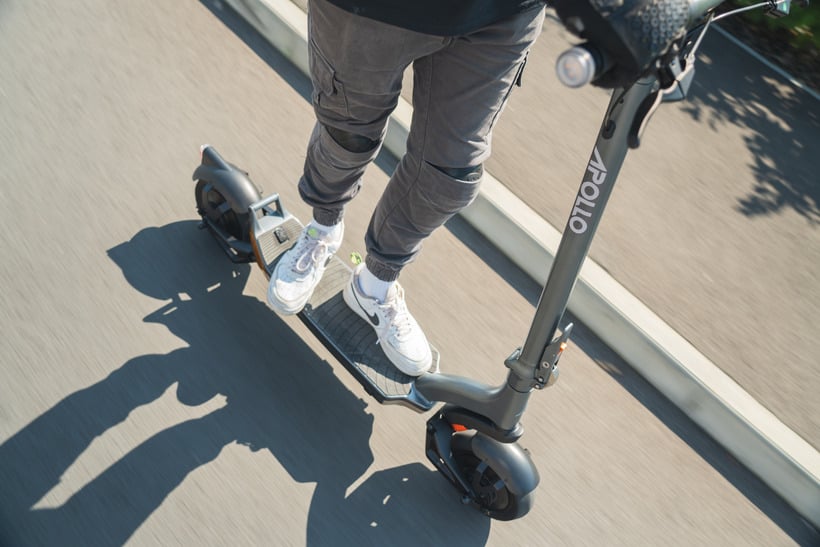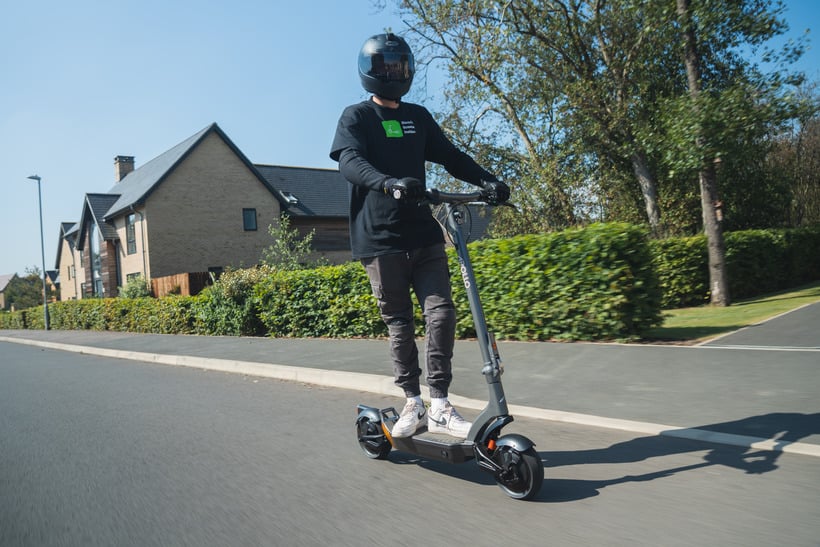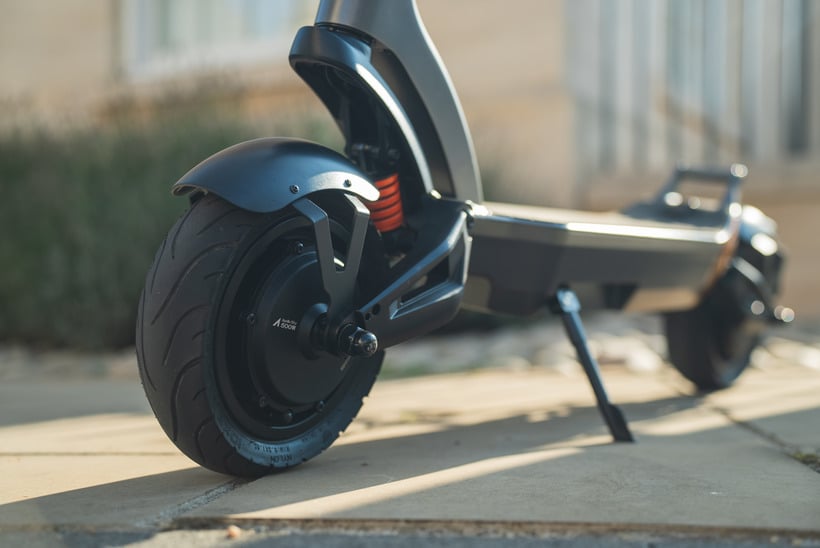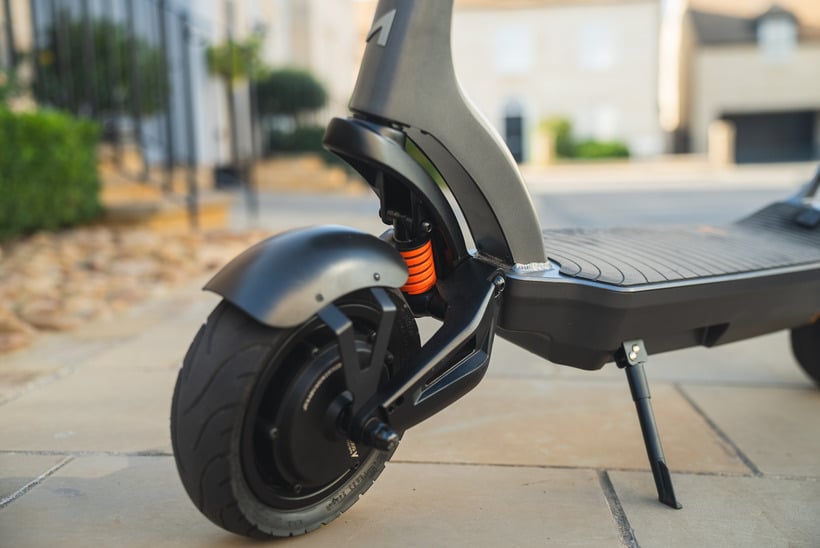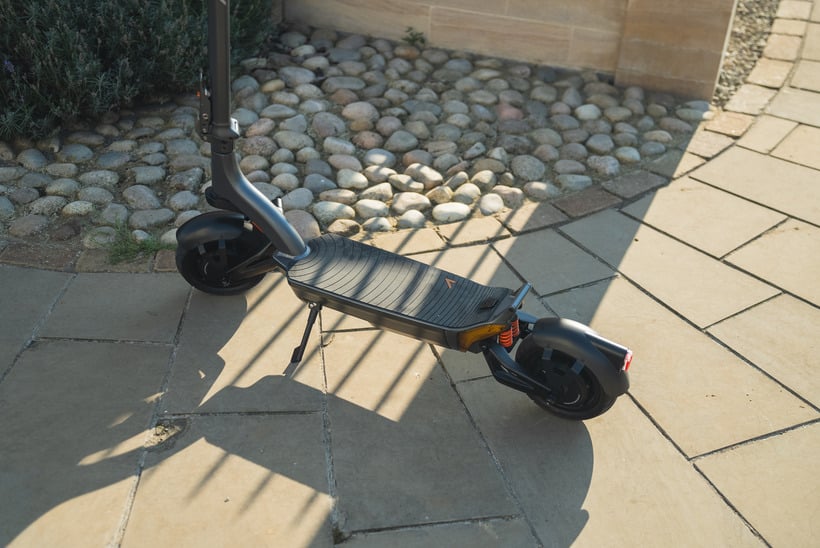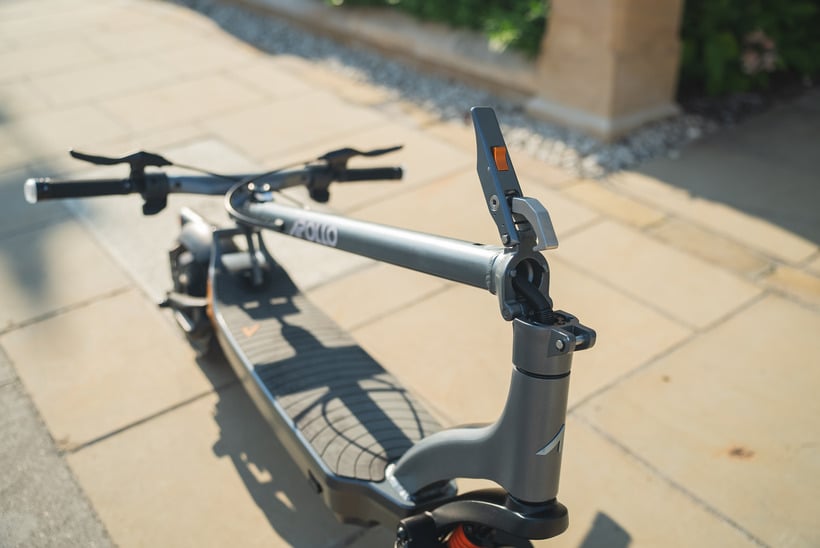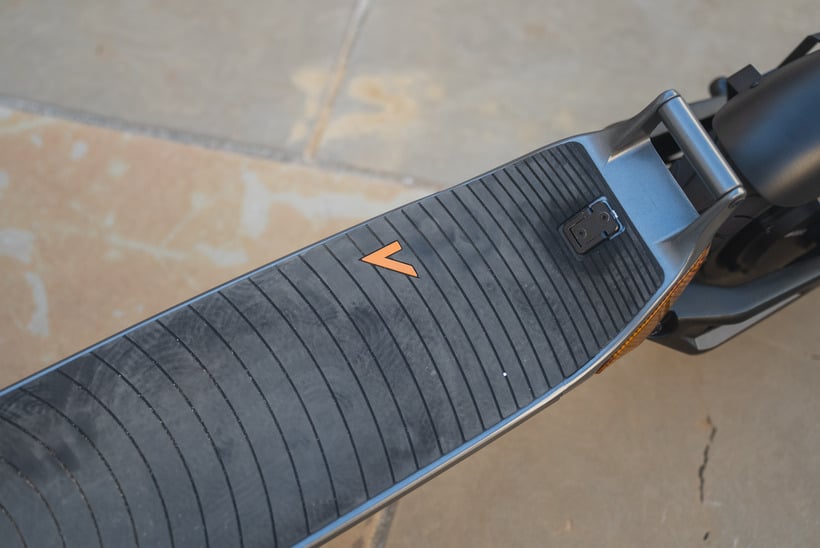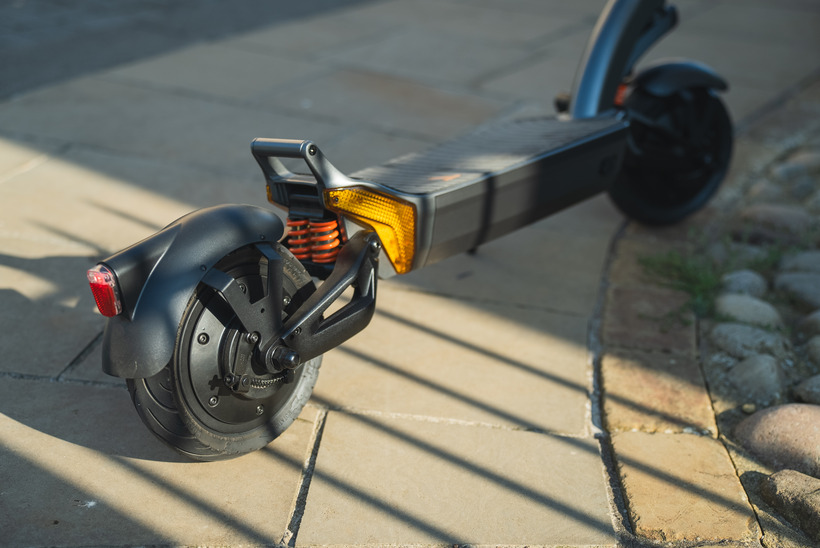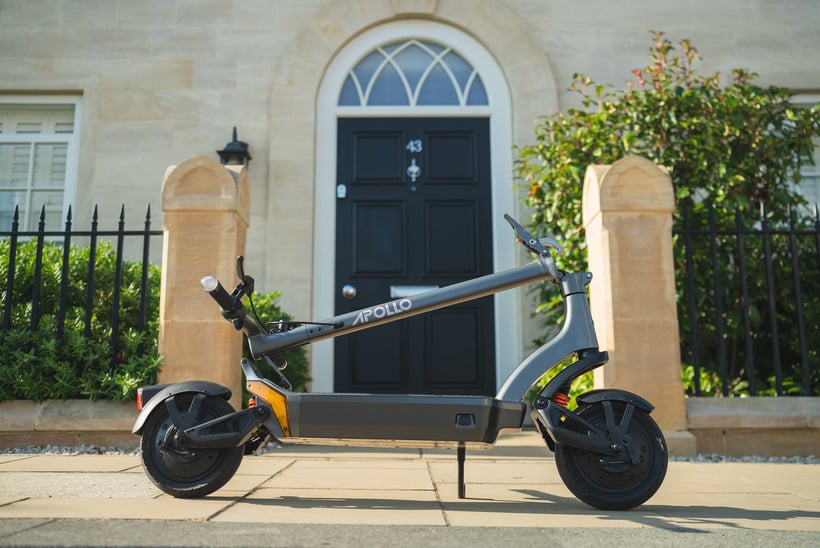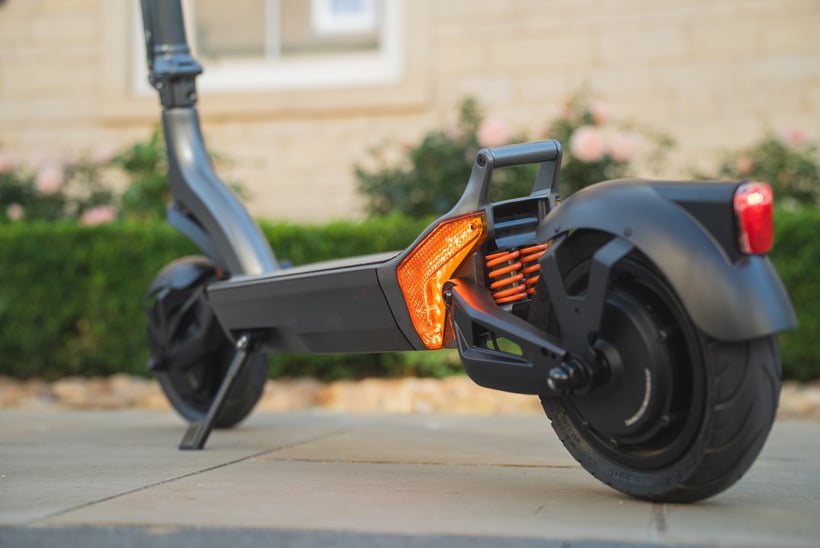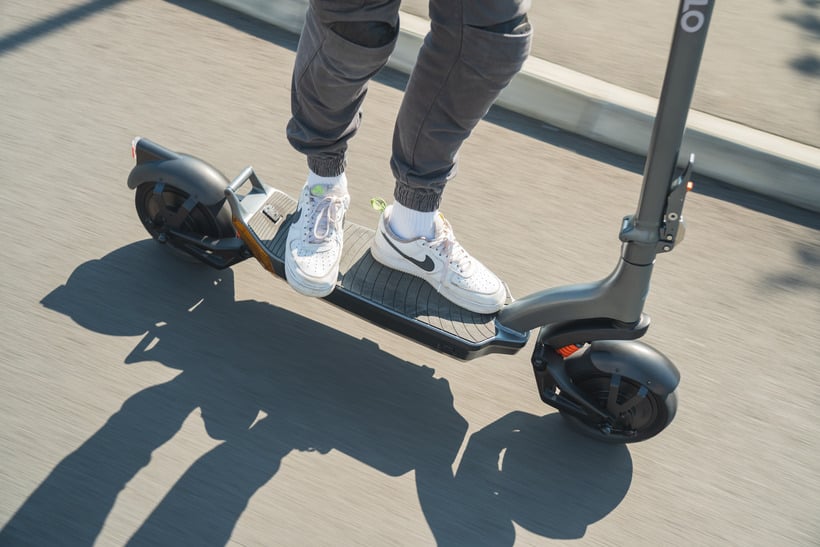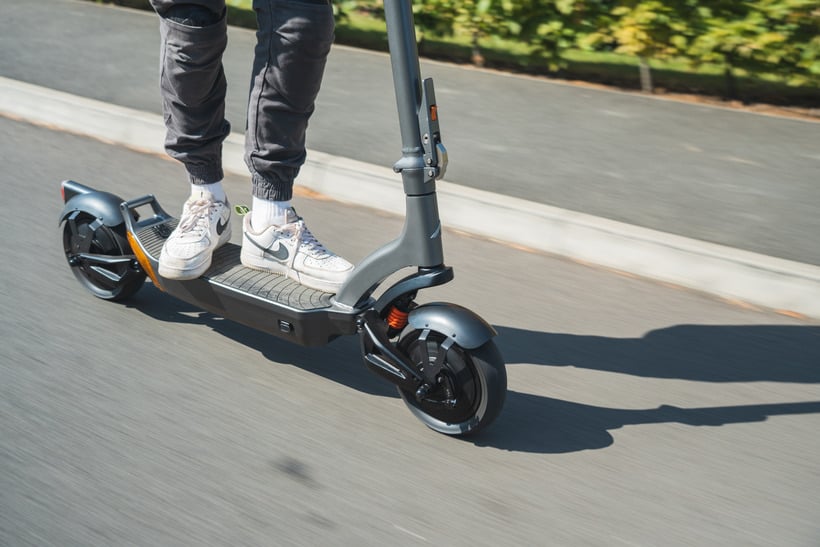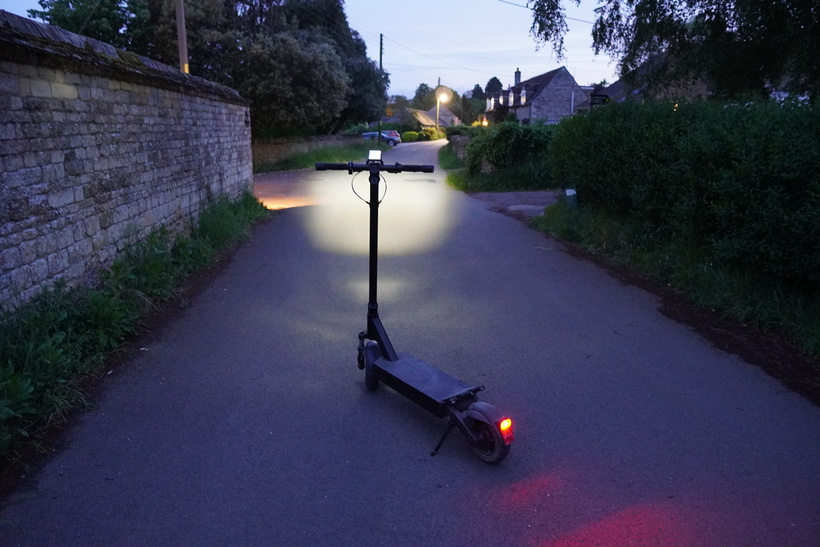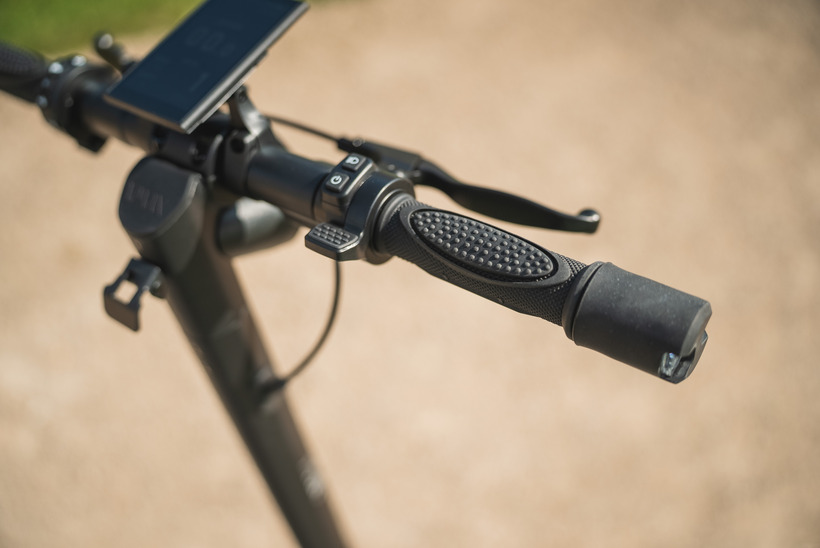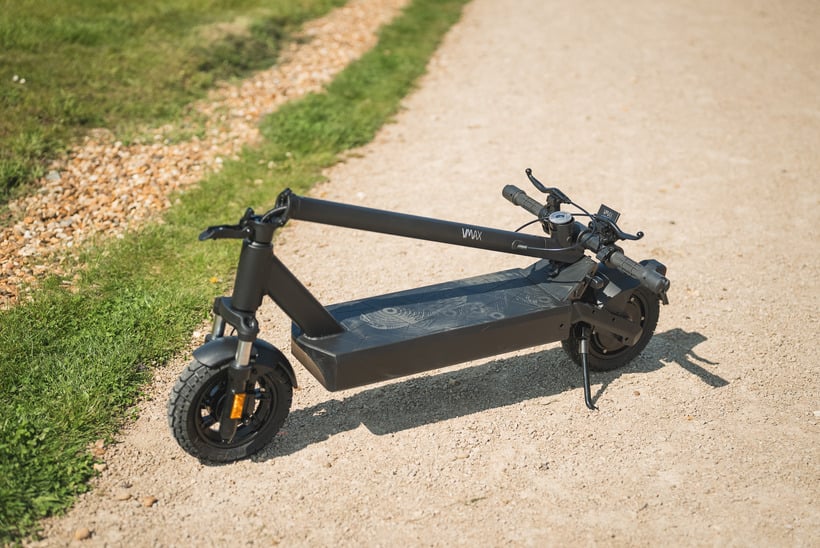Home » Best » Waterproof » Top Picks
Top Picks & Comparison: Best Waterproof Electric Scooters (Quick List)
Quick List: Best Waterproof Electric Scooters
To find the 5 best waterproof electric scooters, I tested 32 models.
- VMAX VX5 Pro GT – Reliably Rainproof on a Budget
- VMAX VX2 Pro GT – Rain-Resistant Range Champ
- Apollo Go – Best Wet-Weather Features
- Apollo City – Best Handling in Wet Conditions
- VMAX VX4 GT – Most Adaptable All-Season Explorer
Best Waterproof Electric Scooters
Reliably Rainproof on a Budget

VMAX VX5 Pro GT
Performance Report
Performance Report:
Tester: Josh Frisby (197 lbs, 6.1 ft)
- Top Speed: 18 mph
- Real Speed: 17.4 mph*
- 0-15 mph: 6.7 s*
- Max Range: 22 miles
- Real Range: 19 miles*
- Braking: 2.0 meters*
- Suspension: n/a
- Max Incline: 14 degrees
- Optimal Incline: 8 degrees*
- Weight: 36.8 lbs
- Load: 265 lbs
Pros & Cons
The Good:
- Competitive performance profile
- 11% faster acceleration compared to the average of its rivals
- Shortest stopping distance among its rivals
- Best design and build in its price class
- Wider than normal handlebars promote good handling
- Regenerative braking system recycles kinetic energy to recharge the battery on the go
- High quality UL2272-certified battery
- Grippy and nimble 8.5-inch tubed tires
- Immaculate cable management
- Mobile app allows for customized performance
- Slick folding mechanism
- 40.2-inch deck-to-handlebar height makes it suitable for tall riders up to 6’3”
- Protective IPX6 water-resistance rating
- Long fenders that prevent splashback
- Quiet motor
- Low maintenance
- 2-year warranty
The Bad:
- Display gets washed out in direct light
- The taillight is bright at night, but it doesn’t flash when you brake - it just glows a brighter red
Video Review
Rain-Resistant Range Champ

VMAX VX2 Pro GT
Performance Report
Performance Report:
Tester: Josh Frisby (190 lbs, 6.1 ft)
- Top Speed: 24 mph
- Real Speed: 24.5 mph*
- 0-15 mph: 3.8 s*
- Max Range: 37 miles
- Real Range: 30.6 miles*
- Braking: 3.0 meters*
- Suspension: n/a
- Max Incline: 15 degrees
- Optimal Incline: 9 degrees*
- Weight: 45 lbs
- Load: 287 lbs
Pros & Cons
The Good:
- Longest tested range in the sub-$1,000 class
- Fastest acceleration among similarly priced single-motor scooters
- Strong brakes that use a regenerative system to recycle kinetic energy to recharge the battery on the go
- Exceptionally quiet motor
- Impeccable build quality
- Nimble tubeless tires
- Suitable for tall and heavy riders
- Bright lights with excellent turn signals that are visible from the front, rear, and sides
- Mobile app allows for customized performance
- Slick folding mechanism
- Tidy cable management
- Protective IPX6 water-resistance rating
- Long fenders that prevent splashback
- Low maintenance
- 2-year warranty
The Bad:
- Doesn’t have suspension
- Display gets washed out in direct light
- The taillight is bright at night, but it doesn’t flash when you brake - it just glows a brighter red
Video Review
Best Wet-Weather Features

Apollo Go
Performance Report
Performance Report:
Tester: Josh Frisby (197 lbs, 6.1 ft)
- Top Speed: 28 mph
- Real Speed: 25.5 mph*
- 0-15 mph: 3.8 s*
- Max Range: 30 miles
- Real Range: 17.6 miles*
- Braking: 3.1 meters*
- Suspension: 6/10*
- Max Incline: 25 degrees
- Optimal Incline: 12 degrees*
- Weight: 46 lbs
- Load: 265 lbs
Pros & Cons
The Good:
- Ultra-sleek design
- Premium build quality
- Packed full of useful features
- Cybertruck-inspired lights
- Handlebar integrated turn signals
- Well-designed geometry delivers intuitive control and handling
- Best-in-class cockpit ergonomics
- DOT Matrix display is extremely bright and easy to read from any angle
- Comes with a free QuadLock phone case accessory (saving you $30)
- Integrated mobile app for customized performance
- Stable and nimble thanks to its 14-degree rake angle
- Reliable self-healing tires
- A regenerative braking system recycles kinetic energy to recharge the battery by up to 10%
- A 40-inch deck-to-handlebar height and 265 lb load-bearing capacity make it well-suited to tall and heavy riders
- Impeccable cable management
- Extremely low maintenance
- Battery management system ensures long-term health
- Protective IP66 water-resistance rating
The Bad:
- The plastic caps that encapsulate the turn signals are prone to damage
- The taillight is dim during the day
- The clip-in, clip-out folding hook system is a little fiddly
- The handlebars are slightly narrow
Video Review
Photos
Best Handling in Wet Conditions

Apollo City Pro
Performance Report
Performance Report:
Tester: Josh Frisby (190 lbs, 6.1 ft)
- Top Speed: 32 mph
- Real Speed: 31.2 mph*
- 0-15 mph: 2.3 s*
- 0-25 mph: 6.1 s*
- Max Range: 43 miles
- Real Range: 27 miles*
- Braking: 2.1 meters*
- Suspension: 7.5/10*
- Max Incline: 20 degrees
- Optimal Incline: 13 degrees*
- Weight: 65 lbs
- Load: 265 lbs
Pros & Cons
The Good:
- Competitive performance profile
- Fast acceleration
- Smooth power delivery
- Sublime handling
- Sleek aesthetic
- Feature-rich
- Proprietary design ensures top-class build quality
- Tubeless, self-healing tires
- Shock-absorbing triple spring suspension
- Regen brake recharges the battery by up to 10%
- Intuitive folding mechanism
- Good lighting setup with the best turn signals that I’ve tested
- Battery management system ensures long-term performance
- Integrated mobile app for customized performance
- Fast charging
- 10,000 km warranty
- Low maintenance
- Suitable for tall and heavy riders
- High IP66 water-resistance rating
The Bad:
- The display could be brighter
- Similarly priced models go faster, but the Apollo City Pro’s overall package is superior
Video Review
Photos
Most Adaptable All-Season Explorer

VMAX VX4 GT
Performance Report
Performance Report:
Tester: Josh Frisby (197 lbs, 6.1 ft)
- Top Speed: 25 mph
- Real Speed: 25.8 mph*
- 0-15 mph: 3.2 s*
- 0-25 mph: 9.6 s*
- Max Range: 62 miles
- Real Range: 36.7 miles*
- Braking: 3.4 meters*
- Suspension: 6.5/10*
- Max Incline: 18 degrees
- Optimal Incline: 11 degrees*
- Weight: 63.9 lbs
- Load: 330 lbs
Pros & Cons
The Good:
- Long real-world tested range
- Zippy acceleration
- Quiet motor
- Smooth front and rear suspension
- Versatile hybrid tubeless tires
- Great handling
- Excellent build quality
- Regenerative braking system that recycles kinetic energy to recharge the battery on the go
- Immaculate cable management
- Spacious dimensions
- Suitable for tall and heavy riders (up to 6’4” and 330 lbs)
- Bright turn signals ensure 360-degree visibility
- Display remains visible under direct sunlight
- Long fenders prevent splashback
- Protective IPX6 water-resistance rating
- Low maintenance
- 2-year warranty
The Bad:
- While the folding lever is simple to operate, the same can’t be said for how the latch on the back of the handlebars hooks to the kickplate. It’s difficult to connect the two, and they have a habit of becoming unhooked. This makes the scooter cumbersome to maneuver when folded
- Installing the handlebars is fiddly - there was a lot of extra slack in the thick wires and a very narrow hole to stick them through
- The button pad to control the settings, turn signals, and riding modes is well positioned but would benefit from a more responsive design - with gloves on it was hard to tell if I had pressed the turn signal or riding mode button
- The taillight is bright at night, but it doesn’t flash when you brake - it just glows a brighter red
Video Review
Compare Waterproof Electric Scooters
VMAX VX5 Pro | VMAX VX2 Pro | Apollo Go | Apollo City | VMAX VX4 |
|
|---|---|---|---|---|---|
| Where to Buy | VMAX | VMAX | Apollo | Apollo | VMAX |
| Price | $499 | $899 | $1,099 | $1,649 | $1,299 |
| Award | Reliably Rainproof on a Budget | Rain-Resistant Range Champ | Best Wet-Weather Features | Best Handling in Wet Conditions | Most Adaptable All-Season Explorer |
| Review | Review | Review | Review | Review | Review |
| Performance | |||||
| Top Speed | 18 mph | 24 mph | 28 mph | 32 mph | 25 mph |
| 0-15 MPH | 6.7 s | 3.8 s | 3.8 s | 2.3 s | 3.2 s |
| 0-25 MPH | n/a | n/a | n/a | 6.1 s | 9.6 s |
| Max Range | 22 miles | 37 miles | 30 miles | 43 miles | 62 miles |
| Tested Range | 19 miles | 30.6 miles | 17.6 miles | 27 miles | 36.7 miles |
| Shock Absorp. | n/a | n/a | 6/10 | 7.5/10 | 6.5/10 |
| Braking | 2.0 meters | 3.0 meters | 3.1 meters | 2.1 meters | 3.4 meters |
| Max Incline | 14 degrees | 15 degrees | 25 degrees | 20 degrees | 18 degrees |
| Optimal Incline | 8 degrees | 9 degrees | 12 degrees | 13 degrees | 11 degrees |
| Specs | |||||
| IP Rating | IPX6 | IPX6 | IP66 | IP66 | IPX6 |
| Motor | 36V 400W | 48V 500W | 36V 350W (x2) | 48V 500W (x2) | 48V 500W |
| Throttle | Thumb | Thumb | Thumb | Thumb | Thumb |
| Battery | 36V 10.4Ah FST | 48V 16Ah FST | 36V 15Ah FST | 48V 20Ah FST | 48V 23.2Ah FST |
| Charge Time | 5 hours | 8.5 hours | 7.5 hours | 4.5 hours | 12 hours |
| Brakes | Drum, Regen | Drum, Regen | Drum, Regen | Drum (x2), Regen | Drum, Regen |
| Suspension | None | None | Spring, Rubber Block | Triple Springs, Swingarms | Hydraulic Fork, Rubber Block, Swingarms |
| Tire Size | 9 inch | 10 inch | 9 inch | 10 inch | 10 inch |
| Tire Type | Air (Tubeless) | Air (Tubeless) | Air (Tubeless, Self-Healing) | Air (Tubeless, Self-Healing) | Air (Tubeless) |
| Weight | 36.8 lbs | 45 lbs | 46 lbs | 65 lbs | 63.9 lbs |
| Load | 265 lbs | 287 lbs | 265 lbs | 265 lbs | 330 lbs |
| Foldability | Folds at Stem | Folds at Stem | Folds at Stem | Folds at Stem | Folds at Stem |
| Lights | Headlight, Taillight, Turn Signals | Headlight, Taillight, Turn Signals | Headlight, Taillight, Turn Signals | Headlight, Taillight, Turn Signals | Headlight, Taillight, Turn Signals |
| Terrain | Street | Street | Street | Street | Street, Off-Road |
How Did I Test the Scooters?
Test Criteria
I tested 32 of the most well-equipped wet-weather electric scooters to find the 5 best models. Each was evaluated on its water-resistance rating, tire performance (including type, size, tread, and traction), braking power, handling, deck grip, and splashback protection.
Water-Resistance Rating
There’s no secret formula to test the IP ratings specified by manufacturers. It’s simply a case of getting outside in the rain and putting the scooters through their paces.

Generally speaking, a rating of IP54 and above means a scooter can withstand light showers and puddle splashes. However, in my pursuit of thoroughness, I’ve reported on each scooter's ability to protect against varying degrees of water ingress (i.e. puddle splashes to high-pressure water jets).

Tire Performance
Tires take on even greater importance when it comes to wet, slippery conditions.
Based on my tests, pneumatic tires perform the best in adverse weather. The larger they are, the bigger their contact patch, while their tread should be lightly patterned to ensure sufficient traction.

While testing the scooters, I paid close attention to all of these details – especially traction (and, in some cases, I pushed the scooters a little too hard around corners and slid off them – all for the love of reviewing scooters!).

Braking Power
My job here was to filter out any poor-performing or problematic models so that I was left with those that I could rely on. To do this, I assessed each scooter’s braking power by riding at a speed of 15 mph and stopping as quickly as I could without skidding.
Generally, a braking distance of 3.5 meters or less can be considered good, but for these tests, I was a little more forgiving.

In addition to my stopping distance measurements, I also reported on how the different components of the brakes responded to wet weather. Here, I assessed whether scooters with disc brakes experienced any form of fading because of the reduced grip of the calipers on the rotors. On the other hand, I found that those with drum brakes performed similarly to how they did in dry conditions – this is because the drums were enclosed and sealed, meaning they were impervious to the fading effects of water.
Handling
The control and maneuverability that you have while riding during inclement weather is vitally important.

From the width of each scooter’s handlebars to the rake angle of their steering columns (which affects how stable and nimble they are), I tested all the different facets that contribute to a scooter’s overall handling. This also included the ergonomics of each scooter’s cockpit to assess how easy the controls, throttles, and brake levers were to use.
Weight distribution was also key. If a scooter’s weight was distributed evenly across its frame (in other words, it wasn’t top or bottom-heavy), then it stood a good chance of passing my handling test.

Fender Position For Splashback Protection
Fenders are often overlooked, but they’re crucial for wet-weather riding.
Here, I looked closely at their positioning and ability to protect against water splashes and debris.

Expert Tip: By lining up a ruler so that it comes into contact with a scooter’s tire and fender, you can gauge a pretty good idea of how protected you’ll be from splashback. The lower the angle, the greater the protection. For instance, if the ruler stands up at 90 degrees, then it’s highly likely that your back will be covered in debris. On the other hand, if the ruler sits at a 45-degree angle, you’ll be far more protected.
Deck Size & Grip
While most manufacturers publish dimensions detailing the length and width of their scooter’s deck, they don’t always paint the full picture. For instance, if there are charge ports that take up a couple of inches, the manufacturers won’t report this.
As a result, I measured usable deck space, as well as the length and angle of each scooter’s kickplate. Here, the larger the space, the more room there was to position your weight across the scooter for greater control.

I also assessed how grippy each deck was. If it didn’t have enough grip to make me feel confident while riding, then the scooter didn’t make the cut.

How I Assess Deck Size, Grip, Ground Clearance & Kickplate Angles








